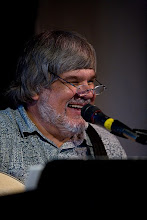The Beatles are playing almost every day at the Cavern Club on Matthew Street in Liverpool, sometimes even twice a day there. That must have made their lives a bit simpler, getting comfortable and friendly with the regulars. This is the period when they are known to be eating sandwiches, drinking tea and smoking cigarettes on stage, taking a very casual attitude. Their styles are becoming more casual, less stylised, too. We see more tee shirts and "dungarees" (blue jeans, to you and me) and less leather. And the hair is looking less piled high in the front. One gets the sense they are preparing themselves for the next big change. After all, the Beatles are all about following (or is it making?) change.
Among the songs the Beatles are covering regularly are at least nine penned by the American songwriting team of Jerry Leiber and Mike Stoller. These are some of their best numbers. (Many of them came to the Beatles attention by way of Elvis Presley or the Coasters. The bright line between white and black music is really blurring.)
Three Cool Cats
Thumbin' a Ride
Youngblood
Stand By Me
Kansas City
Hound Dog
Loving You
Baby I Don’t Care
Jerry Leiber died last week (August 22, 2011) at the age of 78. Rest in peace and heartfelt thanks, Jerry.




